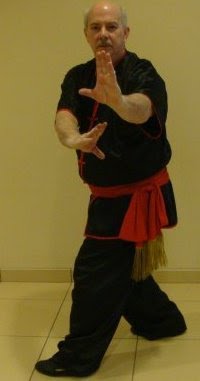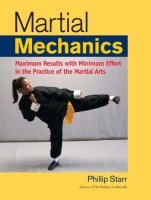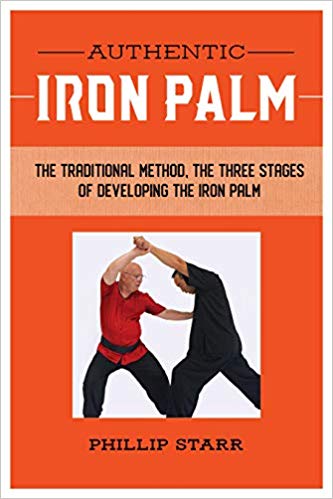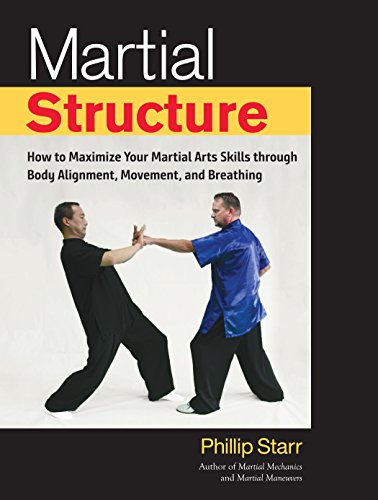by Phillip Starr
In
the practice of contemporary martial arts there is a tendency for
instructors and students to shy away from any training routine that
involves the possibility of much discomfort or injury. This is
only natural. As human beings we usually don't usually flock to
engage in activities that are inherently painful or risky and we tend
to take a hard look at those "weirdos" who do.
I
recall watching a group of students practice one-step fighting in a
certain martial arts school some years ago. The attacker would
step back into the usual pre-attack position, executing a snappy low
block as he did so. When the receiver was ready to perform his
defensive maneuver he would utter a strong kiai and the attacker
would execute a powerful lunging thrust. The receiver would
step back, block the attack, and deliver a crisp counter-attack.
Sound
familiar? Sure, it does. It's the usual one-step fighting
drill that every student of karate and taekwondo has practiced
hundreds and thousand of times, except for one thing...the
participants were standing at least eight
feet apart.
When the receiver executed his blocking technique he never even
touched the aggressor's arm! And when he counter-punched,
his fist was at least four feet away from the attacker's body!
Naturally,
I asked the instructor why the students didn't touch each other at
all during this common training exercise. He told me that he
didn't want them to bruise their arms or risk striking each other if
their blows weren't adequately controlled.
Good
Lord. Well, these folks will be in great shape if they're ever
attacked by a strong gust of wind.
Now,
don't get me wrong. I certainly don't advocate uncontrolled
violence as a training tool. I remember visiting another
martial arts school whose members engaged in full-contact sparring
within two weeks of enrollment! The neophytes, who had no real
knowledge of martial arts technique, were thrown to the lions (the
more experienced students) like so much raw meat. To say they
got the stuffing pounded out of them would be a serious
understatement. The instructor reasoned that if one wanted to
become skilled at fighting one had to know what it is like to get
hit. Students were told that they had to learn to keep going
even if they'd been struck very forcefully because this is what "real
combat is like."
Good
thing they didn't teach swordsmanship.
Certainly,
I believe that students need to develop strong technique and a strong
spirit through rigorous training. I believe that real martial
arts technique and spirit cannot be understood or developed except
through the application of controlled violence. The operative word
in that sentence is controlled.
Beginning
students are unable to understand this concept and it has to be
presented to them very gradually. But as they grow and develop
their skills, they must learn to accept this fact and train
accordingly. Violence is, after all, why the martial arts were
originally developed. They were not cultivated to help their
followers discover their "inner child", as a panacea for
various ailments, or for thrilling audiences.
I
once told my students that they would learn much more from pain and
discomfort than they ever would from sheltered contentment. In
traditional Japanese martial arts there is a term describing this
type of practice. It is nangyo
(in
Chinese, nanhang).
It refers to hardship (nan) and a road which is traveled by many
people, perhaps a crossroads. This is an accepted part of the
traditional martial ways; a necessary ingredient for the development
of true skill and understanding. The Chinese usually refer to
this particular aspect of training as qi-ku
(吃苦),
which means, "eat
bitter".
In
contrast to the aforementioned karate school wherein participants
never touched each other, the former head of the Japan Karate
Association, Master Masatoshi Nakayama, recalled that when he was
training under Master Gichin Funakoshi during his college years, his
arms would be so sore and bruised from blocking his partner's attacks
that he could hardly lift them. Another kendo master spoke of
being struck so hard on the front of his helmet (men) that it knocked
him to his knees and splintered his partner's shinai (bamboo practice
sword).
Students
of the legendary Morihei Uyeshiba (founder of aikido) recalled how
his vise-like grip would leave bruises on their wrists and Americans
who trained in judo under the revered Kyuzo Mifune spoke of being
thrown so hard that they were rendered unconscious. My own
teacher, Master W. C. Chen, remembered seeing exhausted classmates
run out of the drill line, and vomit.
Some of these things would be considered a tad excessive by today's standards but it gives you an idea of what traditional training was like back in the day. It was not done because the instructor was a sadistic brute who wanted to puff out his machismo for all the world to see (although such instructors, if that term can be applied to them, have always existed). The instructor's first and only concern was for the students, to help them develop real skill as opposed to something that only looks good but has no real internal substance.
In
time, students develop a strong sense of self-confidence. They
don't fear being attacked because that happens every night that they
attend class. Some years ago one of my students was forced to
defend himself against an angered thug who was wielding a baseball
bat. When he told me about it he smiled and said, "I
wasn't really afraid of the guy at all. Heck, I get punched at
by professionals at least three times a week in the training hall!"
For
the teachers of the traditional budo ("martial ways"; in
Chinese, wu-dao)
it's a delicate balance; how can we push the students and keep the
violence under control? Naturally, no competent teacher wants
to see a student get hurt but some minor injuries are unavoidable and
should be expected. Anyone who's spent much time in the martial
arts has had his or her fair share of split lips, strawberries,
bruises, and the like. Some have even broken a small bone or
two. It happens; it's simply the nature of the beast. Minor
injuries are very common and should be expected! They are simply a
part of the developmental processes of the budo. Having said
that, I must also emphasize that it is the responsibility of the
instructor and senior students to do their best to ensure that the
violence never escalates beyond a certain level.
As a student's skill increases, the attacks he faces in the training hall must become more and more realistic, That is, if he fails to perform his defensive maneuver correctly he may well be knocked on his tail. At the same time, students must (gradually) learn that a bloody lip isn't the end of the world and it's still possible to continue training even after getting smacked in the ribs.
Qi-ku.














